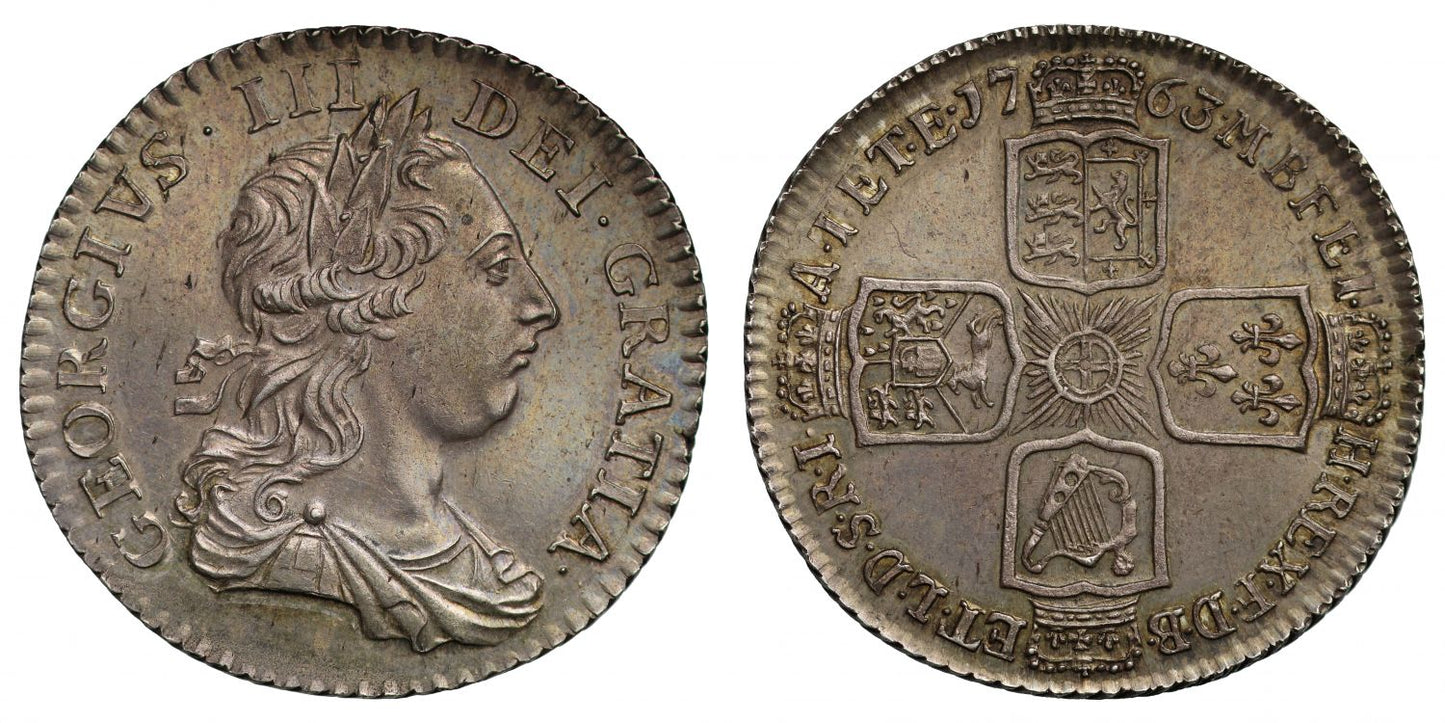FAQs
What makes a coin valuable?
I have coins to sell, what’s the next step?
How will my purchases be shipped?
What happens if I’m not entirely happy with my purchase?
George III 1763 Shilling, "Northumberland" one year only type AU58
George III (1760-1820), silver Shilling, 1763, so-called Northumberland type, young laureate and draped bust right, Latin legend and toothed border surrounding, GEORGIVS. III DEI. GRATIA. rev. crowned cruciform shields, garter star at centre, date either side of top crown, Latin legend and toothed border surrounding, M.B.F. ET. H. REX. F.D. B.ET. L. D. S. R. I. A. T ET. E. weight 6.02g (ESC 1214; Bull 2124; S.3742). Toned, one slight rim imperfection, has been slabbed and graded by NGC as AU58.
NGC Certification 6133357-008
The Latin legends translate to on obverse "George III by the Grace of God" continuing on the reverse in abbreviated Latin which if in shown in full reads "Magnae Britanniae Franciae et Hiberniae Rex Fidei Defensor Brun et Lunebergen-sis Dux, Sacri Romani Imperii Archi-Thesaurius et Elector" and translates as "King of Great Britain, France and Ireland, Defender of the Faith, Duke of Brunswick and Luneberg, High Treasurer and Elector of the Holy Roman Empire."
The new book "The Metal in Britain's Coins" by Dr Graham Birch details the issue of silver dated 1763 in Chapter 10 "The Capture of the Hermione and the Minting of the Northumberland Shillings" where a cargo of bullion in the hold of the Hermione was captured from the Spanish on the 17th May 1762 off the coast of Portugal, amounting to some 47 tonnes of treasure. There was enough captured to boost the gross domestic product of the UK by approximately 0.64% and it all arrived in London on the 12th August 1762 at a time when there was a great need for silver coin in the UK. Much of the treasure was sold to the Bank of England and the East India Company for export but some £5,791 was sent to the Mint for coining, much was to become Threepences dated 1763. However at least £100 worth was to become Shillings dated 1763 as part of a commission to distribute in Dublin on the occasion of the Earl of Northumberland becoming Lord Lieutenant of Dublin, which amounts to 2,000 Shillings. The Earl gave £20 worth of this amount out prior to leaving England to three battalions of the Middlesex Militia, probably a Shilling per man. The rest were then given out in Dublin at either the entrance parade and at charitable events that followed. The survival rate of this small issue is high as the coins are frequently encountered today, and as such their status as gifts was no doubt well respected and sentimental.
An old ticket accompanies this piece written in the hand of one of the earlier generations of the Baldwin family (early 20th Century) mentioning the £100 worth given out.
FAQs
What makes a coin valuable?
I have coins to sell, what’s the next step?
How will my purchases be shipped?
What happens if I’m not entirely happy with my purchase?













